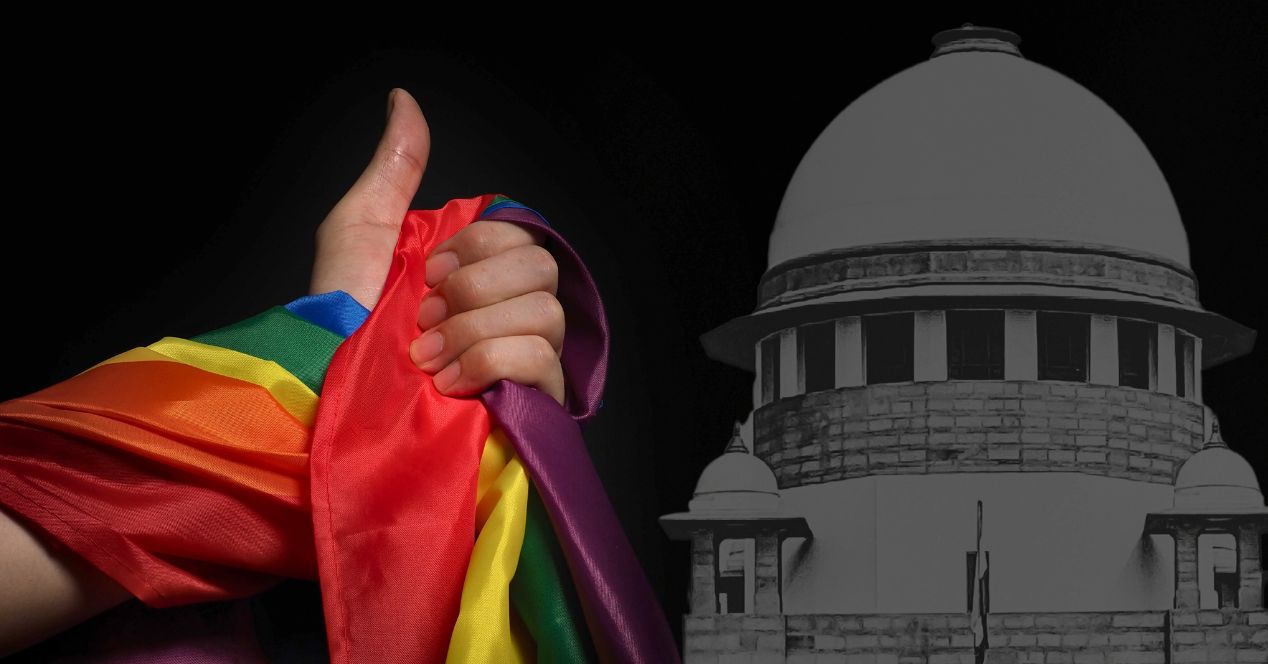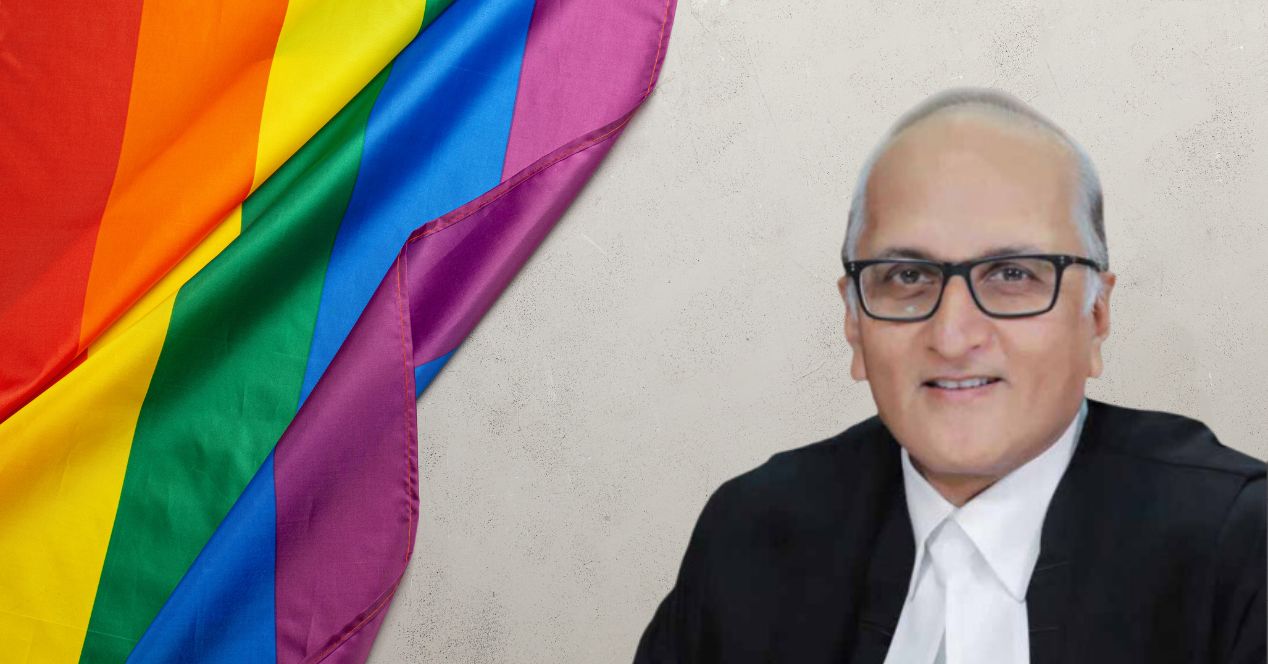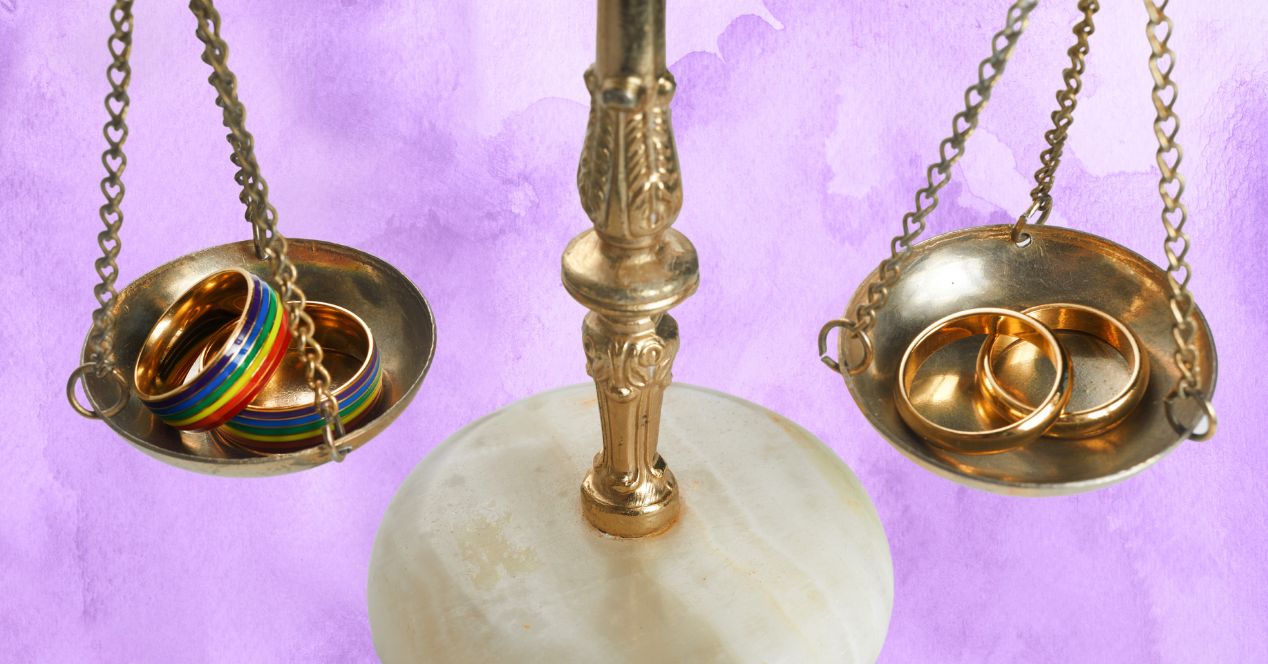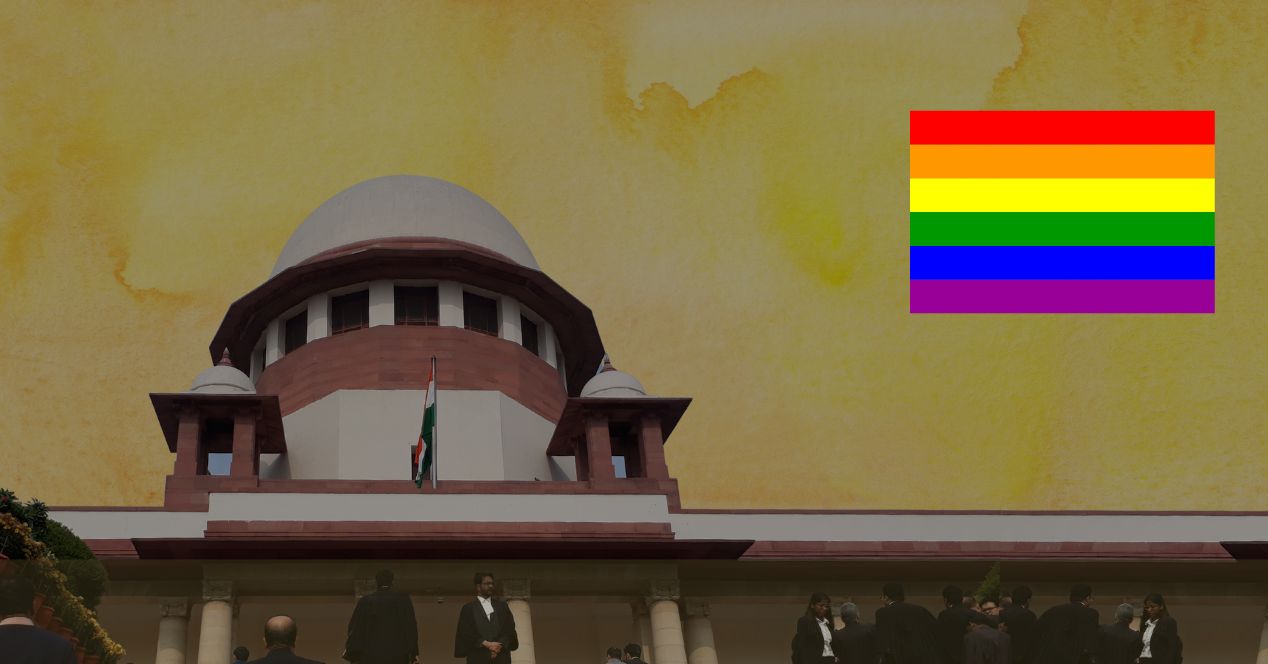Analysis
Unpacking the Right to Intimacy in Supriyo
Even the minority opinion privileged a 'marriage-lite' version of queer union instead of upholding relational equality

If there was one unanimous conclusion in Supriyo Chakraborty & Anr. v Union of India, it was that the Indian Constitution does not guarantee a fundamental right to marry. While this was disappointing, there are many positives to the judgement; in particular, its acknowledgement of systemic discrimination against the LGBTIQ+ community. Going further, a pair of commentators argued that by not elevating marriage to the status of a fundamental right, the court had opened up a “portal” for re-imagining possibilities for relational and familial associations beyond marriage.
There is some truth to this, in as much as both the majority and minority opinion acknowledge the existence of the right to intimate association (alternately referred to as a “right to relationship”). However, this is where the consensus ends. The five-judge Bench disagreed on the nature and contours of the obligations such a right gives rise to.
In this article, I examine these divergences related to the right to intimate association in the Supriyo judgement. It is hard for me to side with either opinion fully. While I disagree with the majority opinion for the way it re-entrenches the public-private dichotomy and its rather narrow vision of rights, I also find myself disagreeing with the conclusions of the minority opinion, despite agreeing with its premise. The central problem with the minority opinion is the way it ends up privileging a ‘marriage-lite’ version of relationships rather than laying the necessary jurisprudential groundwork for recognising relational equality and autonomy.
Rhetorical rights, deferential courts
Writing the majority opinion, Justice Bhat acknowledges that there is a right to a relationship that flows from the right to life under Article 21. This is a “natural consequence” of the Supreme Court’s earlier rulings in Navtej, Puttaswamy, Shakti Vahini and Shafin Jahan. This right includes the right to “choose a partner, cohabit and enjoy physical intimacy” with a person regardless of their gender, sexual orientation, caste, class and religion. If there is State-led or familial violence meted out to a queer couple who want to live together, the State has an obligation to protect them. Not doing so would impede the freedom to express themselves fully.
However, this right does not extend to seeking a formal legal status from which rights, entitlements and privileges can flow (as is the case with marriage). Justice Bhat is unequivocal in his stance that in the absence of a direct State action in the form of a law, policy or scheme, the judiciary cannot step in and enact such an obligation.
According to Justice Bhat, having a right does not impose a corresponding obligation on the State to “enact a law, or frame a regulation, which enables the facilitation of that expression.” He cites the example of how a right to “move freely throughout the territory of India” (Article 19(1)(d)), does not mean that the State has an obligation to build roads or provide transport.
To be clear, Justice Bhat does not mean that liberty rights in general (Article 21, Article 19) cannot give rise to positive obligations on the State. Rather, what is needed to trigger the enforcement of such positive obligations is an intervening State action. Where the law is silent, the judiciary cannot grant a remedy.
This is not a wholly incorrect reading of Indian constitutional history. Madhav Khosla, while tracing the Supreme Court’s history of adjudicating social rights, observes that the enforcement of such rights is conditional. As Khosla explains,
“Rather than focusing on the inherent nature of measures undertaken by the state, the conditional social rights approach focuses on their implementation. No judicial review is conducted on the former question, making the right conditional upon state action.”
This approach reduces rights to rhetoric since the right itself has no minimum core content that must be protected at all costs. While there are exceptions to this history where the Supreme Court has stepped in and filled in legislative gaps and policy lacunae (NALSA, Vishaka), these cases are more exceptions than the rule. Not only are rights rhetorical within such an interpretive framework, but the judiciary itself is reduced to a more deferential position vis-a-vis the executive and legislative branches.
An overzealous leap in logic
The minority opinion authored by the Chief Justice is imbued with a very different vision of rights.
CJI Chandrachud undertakes an extensive philosophical and legal analysis of the right to intimate association and locates it within the contours of Article 19(1)(a) (freedom of speech and expression), Article 19(1)(c) (freedom to form associations or unions), Article 19(1)(e) (freedom to reside and settle anywhere in India), Article 21 (right to life, dignity and privacy) and Article 25 (freedom of conscience). For the CJI, having a right to intimate relationships is crucial for developing a sense of self and identity.
Having located these rights firmly in Part III of the Constitution, Justices Chandrachud and Kaul both recognise that such a right casts a duty on the State that goes beyond mere non-interference. A right to intimate association lays bare the many ways in which queer individuals do not have access to the bouquet of entitlements that married couples take for granted (maintenance, inheritance, succession, adoption, spousal pension etc).
Acknowledging this discrimination and the fact that the State has a duty to remedy it was the most significant contribution of the judgement. However, both the majority and minority opinions fall short in clarifying the precise nature of that discrimination and the basis on which the State ought to remedy it.
Justices Bhat, Kohli and Narasimha acknowledge discrimination against queer persons, yet they believe that this does not, per se, violate a queer person’s right to a relationship under Article 21 since they can still live together privately without interference. They take a hands-off approach and direct the State to remedy the discrimination inherent in the way social welfare benefits are distributed, but don’t chart out any particular constitutional ethos, values or framework that should guide that exercise.
The minority opinions by Justices Chandrachud and Kaul discard the stifling public-private dichotomy inherent in the majority’s opinion by acknowledging that the discriminatory effect of laws prevents a queer person from enjoying their right to life, dignity and privacy under Article 21. However, in his overzealousness to correct that discrimination, Justice Chandrachud ends up being prescriptive about the precise form in which the State should remedy that discrimination—civil unions.
In the past, Justice Chandrachud has been mindful of the transformative nature of the Constitution and has tried to interpret Part III in keeping with this vision. This premise is unimpeachable; however it does not automatically follow that there is a corresponding right to civil union or an abiding cohabitational relationship either. If there is no fundamental right to marry, why should there be a fundamental right to a civil union specifically? Why force all relationships to conform to the marriage-lite standard of relationships?
This unexplained leap in Justice Chandrachud’s reasoning is what makes it vulnerable to attack and opens it up to criticisms of violating the separation of powers doctrine. His opinion is riddled with contradictions on this point. Justice Chandrachud’s directions and the general tenor of the judgement indicates that he wants the State to recognise a union among queer persons and grant them “benefits under law.” Yet, he defensively argues that his directions do not require the State to create a new legal status or “an institution of any kind” (para 331). But what else could recognising a union for queer relationships amount to?
Moreover, it is unclear from Justice Chandrachud’s opinion what he means by “union” here. Is it any kind of union? A union of three people or only two? Are all atypical families included? Would this include the guru-chela system amongst the Hijra community? Though it is not clear, in several places across his opinion, Justice Chandrachud seems to prefer a union that most closely resembles marriage—that is, a union between two persons where long-term cohabitation is involved. For instance, he notes the following in paragraphs 243 and 244:
“243. This Court recognized that equality demands that queer persons are not discriminated against. An abiding cohabitational relationship which includes within its fold a union of two individuals cannot be discriminated against on the basis of sexual orientation. Material and expressive entitlements which flow from a union must be available to couples in queer unions…
- As a consequence of the rights codified in Part III of the Constitution, this Court holds that all persons have a right to enter into an abiding union with their life partner….”
In doing so, the Chief Justice ended up reinforcing new hierarchies by deciding which kind of queer relationships should receive recognition and protection (only the dyadic, abiding, cohabitational kind). Rather than maintaining neutrality between various kinds of relationships and upholding the autonomy of individuals to decide what’s best for them, Justice Chandrachud ends up elevating those relationships which most closely resemble marriage to the status of a fundamental right.
A lost opportunity
While disagreeing with the minority opinion, I am also deeply sympathetic towards it. Rights should have actionable remedies. These remedies are needed today rather than on some future date. In my understanding, Justices Kaul and Chandrachud were responding to the very real need for providing some actionable basis for challenging discriminatory laws and policies. The advance of rights is always slow and incremental and even if only marriage-like relationships amongst queer persons are recognised, something is always better than nothing.
As tempted as I am to fall back to this defence, I can’t help but think that this judgement was a golden opportunity to lay the groundwork for a more holistic and inclusive regime of rights. This required thinking more deeply about principles of relational equality and autonomy. Rather than simply suggesting that relationships most closely resembling marriage should be extended marriage-like benefits by law, the judges ought to have maintained neutrality amongst different types of relationships and let individuals decide which forms of intimacy are most valuable to them.
Diksha Sanyal is an Assistant Professor at Jindal Global Law School and is currently pursuing a PhD at University College London.




